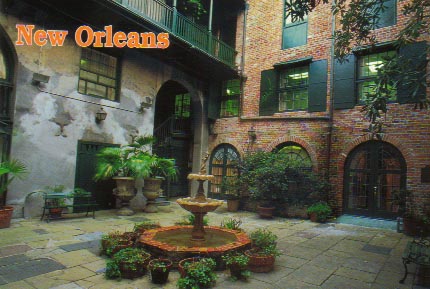creole culture in the South. A census
today shows that Creoles hold ethnic majority in the city, but only
architecture and its accompanying records uncover the important role
men and women of African heritage played in developing this port city.
Since 1726 talented architects and builders, ironworkers, and real estate
developers have emerged from this community of personnes de couleur
libres, free persons of color.
| More Creole Architectural achievements.. |
| . Click here |
The
golden age in New Orleans for those Creoles fortunate enough to be free
was the 1830's and 1840's when they produced notable architects and
builders, artists and musicians, as well as manufacturers and entrepreneurs
in wide variety of businesses. That golden age is captured in the buildings
they built and lived in. With the advent of the Civil War three-fourths
of the buildings lots in Faubourg Marigny had been owned at least one time
by gens de couleur libres.
The numbers
in Faubourg Treme surpassed that. For example, Aristide Mary, a free
man of color, inherited from his Caucasian father major buildings on
Canal Street in the new American sector, and leased both residential
and commercial property to prominent creoles and Americans prior to
and following the Civil War. He used the profits in 1892 to instigate
the far-reaching lawsuit Plessy v. Ferguson, led by Faubourg Treme French
Speaking creoles of color Homere Plessy and the writer Rudolphe Desdunes.
Their efforts to test the constitutionality of the Jim Crow law resulted
in the establishment of the separate but equal doctrine in public areas.
In these ways and others, New Orleans persons of color profoundly affected
American history.
These men and women are gone, but their neighborhoods
with buildings as solid as the social and legal effects of their endeavors
remain. House Histories
disclose
that most persons of color who owned real estate owned slaves, too.
These slaves were tied to the properties of their owners, rural and
urban. In fact, slaves, like some real estate, often were included with
the land title-not by law-but by tradition. Examination of property
titles shows how slaves were sold or manumitted, how they bought their
freedom or how they were exchanged in tandem with house sales and property
settlements.
Only in New Orleans will building-watching, supplemented
by archival findings, reveal the full spectrum of


